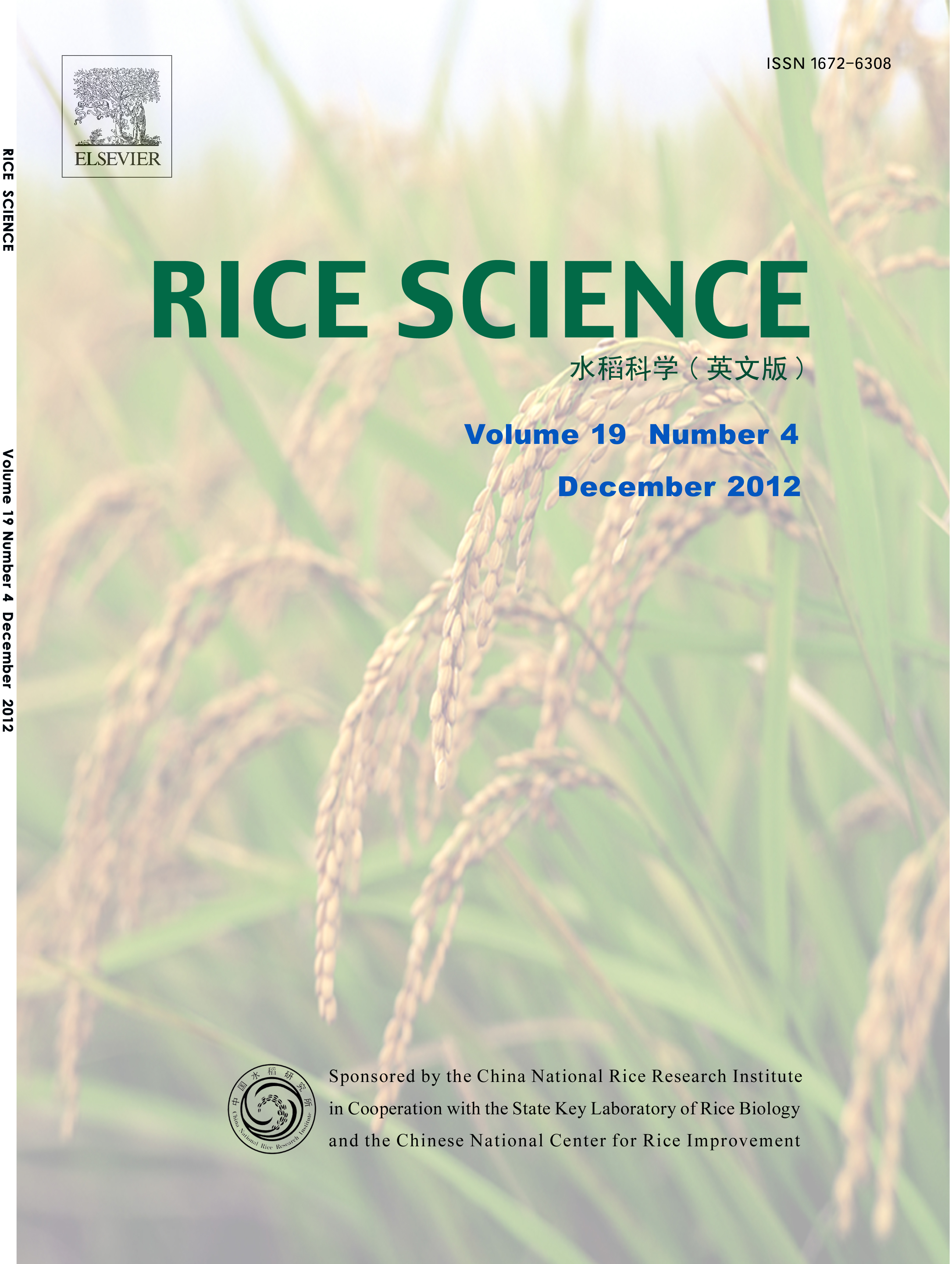|
|
Virulence Types of Magnaporthe oryzae to Hybrid Rice in Sichuan, China
BAI Yu-lian1,2, ZHANG Xue-mei1,3, FENG Hui1,3, JI Hong-li1, HUANG Yun2, PENG Yun-liang1,3
2012, 19(4):
320-326.
A total of 638 isolates of rice blast (Magnaporthe oryzae) were isolated in 2002–2009 from different rice varieties in different regions of Sichuan, China and inoculated onto seven rice varieties (Lijiangxintuanheigu, IR24, Minghui 63, Duohui 1, Chenghui 448, Neihui 99-14 and RHR-1) to differentiate the virulence types of the fungus and trace the changes. The virulence to the seven varieties was respectively scored at 1, 2, 4, 8, 16, 32 and 64. The total scores of individual M. grisea isolates which were the sum of scores infecting differential varieties could, in turn, be used for the nomenclature of the virulence types due to their accordance to the special virulence patterns. The 638 tested isolates were then differentiated into 56 different virulence types. Type 15 virulent to Lijiangxintuanheigu, IR24 and Minghui 63, and Type 127 virulent to all of the seven varieties were the most dominant virulence types respectively with the occurrence frequencies of 15.99% and 15.83%. Type 19 and other seven virulence types were not monitored during 2002–2009. Type 15 was the predominant virulence type in 2002, 2003, 2004 and 2007, whereas Type 127 had been the most dominant virulence type after 2005 except for the year 2007 when the province underwent severe drought. Five hundred and seven out of the 638 tested isolates were virulent to Minghui 63, and 89.58% of the 384 isolates virulent to either Duohui 1, Chenghui 448 or Neihui 99-14 were virulent to Minghui 63, which indicated the impact of the extensive plantation of hybrid rice Minghui 63 as the restorer line on the virulence evolution of M. oryzae in Sichuan. The virulence pattern of the dominant virulence types suggested that the acquiring of virulence to all the major resistant restorer lines was the main routes of the evolution in virulence of M. oryzae to hybrid rice in Sichuan. The virulence frequencies of the 638 tested isolates to IR24, Minghui 63, Duohui 1, Chenghui 448, Neihui 99-14 and RHR-1 were respectively 74.6%, 79.5%, 73.8%, 37.0%, 39.0% and 40.4%. The analysis for the sources of the different virulence type isolates indicated the pathogen on the newly released resistant varieties were stronger than conventional rice varieties which had become susceptible in the field since 1980s.
|

